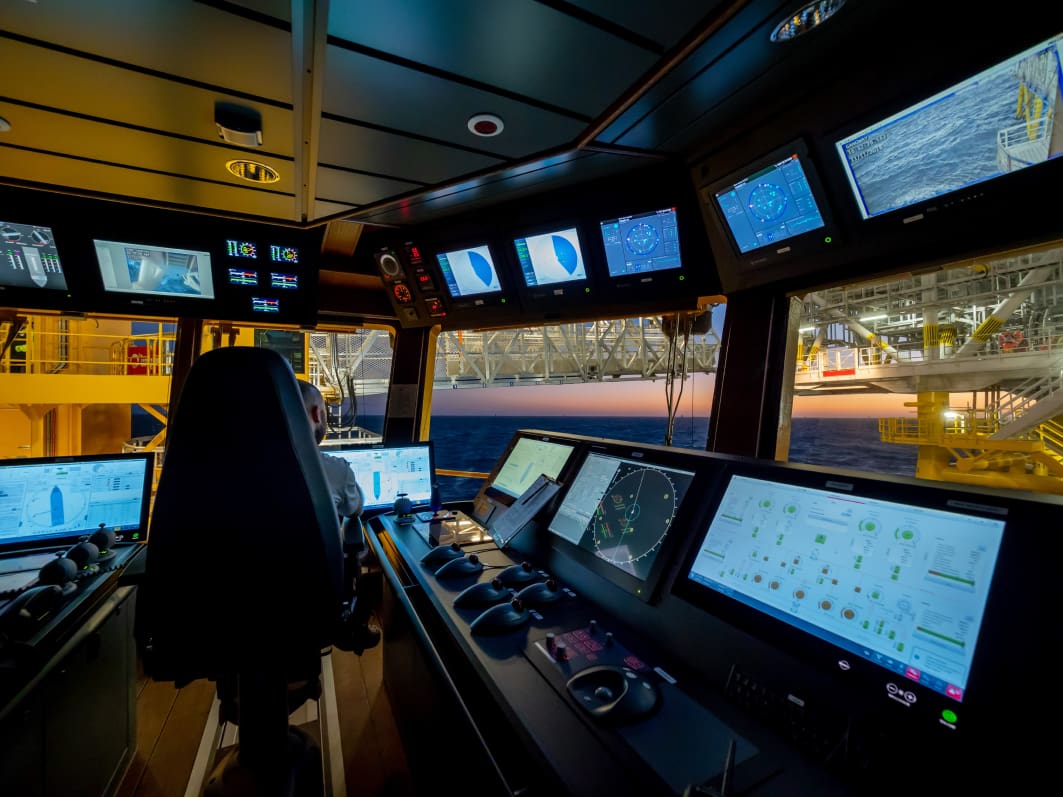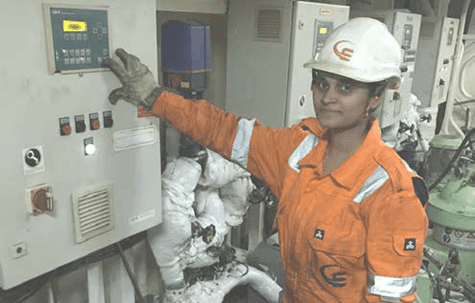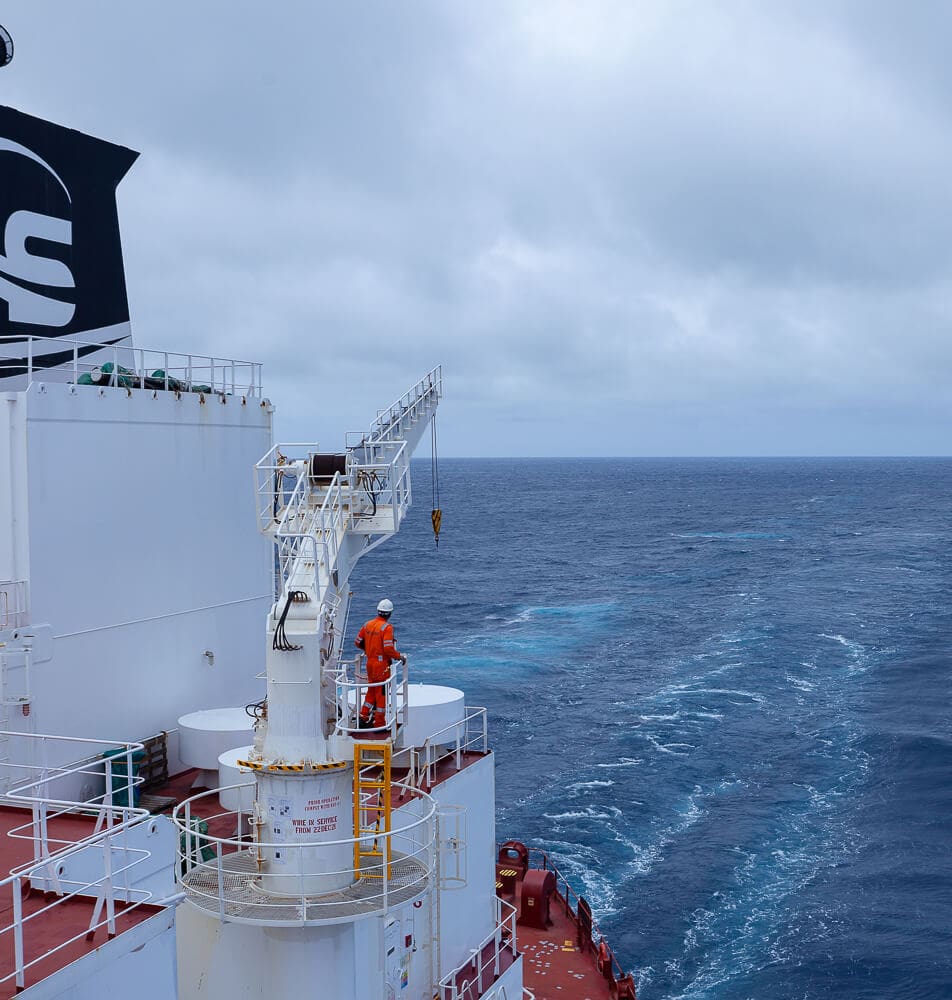Expensive Ergonomics

Paying attention to ergonomics is regarded as an expensive luxury – but ignoring them could be even more expensive in the long run.
It is commonly accepted that 80% of accidents in the maritime industry are linked to human error, putting life, environment, and financial resources at risk. This statistic has remained unchanged for many years – particularly interesting considering that many systems have been automated over the last 40 years. Despite this, most incidents continue to be attributed to humans as operators. This situation suggests that the definition ‘human error’ as it stands poses a significant omission. Why do we humans make so many mistakes, and how much of a role does ergonomics play in contributing to these errors?
Ergonomics is one of those concepts that is frequently referred to, widely accepted but not well comprehended. We often misuse the term ‘ergonomics’ interchangeably with ‘comfort’. While comfort can be an element of ergonomics, ergonomics itself is the scientific discipline concerned with the understanding of interactions among humans and other elements of a system. It is also a profession that applies theory, principles, data and methods to optimize human well-being and overall system performance.
In the shipping sector, the human element is of critical importance, but ergonomics has often been given low priority. The article will navigate the sources of this interesting dilemma where the importance of ergonomics has been recognized by all, but this recognition has little reflection on applications.
Are we exaggerating the significance of ergonomics, or are stakeholders merely paying lip service to the concept?
Ergonomics matters
Human performance, either physical or cognitive, is dependent on many factors which the science of ergonomics aims to address. Scientific research into human behavior reveals that humans have difficulty adapting to any design that forces them to work in an uncomfortable, stressful, or dangerous way. The study of ergonomics aims to avoid this outcome by understanding how equipment, workplace or systems can be designed to suit the human, rather than the other way around.
The maritime industry is a large-scale socio-technical system with the human at the center of the system. Other high-hazard industries have recognized the importance of minimizing the risk from human error, and taken action to address the factors leading up to that error. The nuclear power industry is one of the exemplary sectors that has led the way in understanding, measuring, and improving human reliability. For decades, it has been dynamically researching and investing in ergonomics to minimize human error for the sake of avoiding major incidents.
Ergonomics on board
There are two key problems resulting from suboptimal ergonomics; reduced cognitive ability and complacency. The cognitive ability of the operator is critically important in demanding operations, especially if there is an element of time pressure. At present, most of the work about ergonomics on board ships relates to bridge design. Although the reason for this is obvious, ergonomics is an issue everywhere that humans need to operate. The engine room, cargo control room and deck areas are no less important in terms of ergonomics. For example, the move in recent years from marking ‘high risk’ snapback zones to regarding the whole of the mooring deck as a danger zone is ergonomics in action.
For the moment, however, let’s think about bridge operations by way of example. Imagine a vessel arriving in Singapore at night. The anchorage is congested, and the vessel is proceeding in water dominated by complex tidal patterns.
The bridge team is expected to analyze information from multiple systems simultaneously in this stressful environment, which is constantly changing. Officers must communicate with VTS and other vessels effectively while carefully monitoring other vessels by sight and radar. The visual environment is cluttered by sight-offensive lights coming from the urban landscape, shing vessels, harbor areas and anchored ships. Towing vessels make unpredictable movements. The position of the vessel must be continuously monitored, and the anchoring maneuver itself must be conducted with only small clearance from other vessels. There is also the factor of time stress, such as the need to arrive at the pilot station on time, tender notice of readiness (NOR), etc.
In this context, the multiple human/machine interfaces on the bridge causes additional and heavy cognitive load on the bridge team. Opera- tors are presented with excess information that is hard to process. In the end, this leads to increased mental load which leaves less mental capacity to handle any potential mishaps – creating ideal conditions for the ‘human error’ and ‘poor judgment’ that is still cited as the main reason in collision incidents by many official bodies.
Hypothetically, if the ship had been operated by human-like robots, and if the environment they were working in was not in compliance with their design criteria, would the investigation reports read ‘robot error’ or would they be something more like ‘misuse of robot’?
Contrast this with the approach taken in the aviation industry, which studied cognitive loads among pilots in simulators to measure electrical activity in the brain and heart rates in critical demanding situations (e.g., a technical problem during – flight). The studies revealed that memory and attention span was significantly impaired in cockpits equipped with multiple dials. This was minimized by the introduction of multi-function screens which change the way information is presented. This was a reorganization of information, not a reduction.
Design issues and ergonomic implementation
To continue with the question of bridge design, most shipyards choose one of a few standard console types to accommodate bridge equipment on cargo vessels. These consoles mostly have sub-ergonomic standards; straight-edged and greenish rather than rounded sides in sight friendly colors. For major equipment such as ECDIS, radar, and main engine control levers the locations are pre-designated. For less major equipment and control panels, installation is subject to convenience, depending on the wiring and circuit breakers behind the panel.
Over time, the results may look like a standardized design, but if so, they are one that is optimized to the needs of the equipment, not the operators. This leads to a multitude of blinking buttons, all clustered together, and eventually a massive mental workload for the operator.
The four fundamentals of ergonomic design are:
- Safety;
- Simplicity;
- Proximity;
- Performance.
Implementation
To implement ergonomics, interviews are conducted with operators from different ship types. Nowadays, simulation technology incorporated with eye-tracking equipment and footprint monitoring systems is actively used to create prototypes over numerous iterations. The aim is to select the most suitable position to place monitors, identify critical elements, including where the operator looks, and ensure that equipment is within arm’s reach. To remove clutter, functional analyses are undertaken to identify critical functions, frequent functions and others that can be merged or removed.
Why is ergonomics underrated in the maritime industry?
There are numerous reasons why the maritime industry has been slow to implement ergonomics, but most of them come down to one of two things; awareness and price.
The maritime industry has a tendency to regard ergonomics as an issue of comfort or even luxury. Since it is hard to express the effects of sub-optimal ergonomics in terms of return on Investment (ROI), the ergonomics metric comes as a felt concept rather than measured. It is highly unlikely that any major incident investigation report has ever directly recorded [bad] ergonomics as the main root cause. At best, incident reports cite fatigue as a contributing factor, but not ergonomics. The cues for decision making are not always directly observable.
Apart from awareness, ergonomics comes at a cost. Decision-makers are generally motivated by economies of scale, and the extra costs that come from ergonomics, as a result of better material or better design, are multiplied by vessel number or capita. Acute competition in the market leads to cost pressures and ergonomics are ultimately considered to be an unnecessary expense.
There are valid grounds for this cost-centric approach, but it overlooks the hidden costs of potential accidents, damage to reputation, poor employee engagement and loss of loyalty – to say nothing of the hidden savings of operational optimization.
Although many systems have been automated, their performance is very much dependent on human performance. This involves technical issues such as predictive maintenance, fuel optimization and efficient use of spares. It also applies to operational issues; effective communication with the company, operator, charterers, oil major representatives, port state control officers. The issues that come from these matters are many, and the losses caused by them in sum are large.
It is notable that these ‘hidden’ costs are not that hidden in other human-intensive and high-hazard industries.
What can the industry do?
Pragmatic and viable solutions are in the hands of three major maritime entities:
- Regulatory bodies
MLC was a big step forward in bringing certain standards to crew welfare and the same has to apply to ergonomic standards for onboard applications.
Standardization of ergonomics would not only eliminate cost competition between ship managers but also prompt economies of scale, diminishing the price premium for ergonomics over time. In the absence of defined minimum standards, ship managers who invest in ergonomics will have the sense of being punished for being good. In most cases, however, it is the crew who are punished by working in a sub-ergonomic environment.
- Shipyards
Shipyards are at the heart of ergonomics implementation. Although the equipment is chosen by ship managers, shipyards are in contact with equipment manufacturers, and hold collective bargaining power to pursue ergonomics standards on equipment designs.
The aviation industry provides a good example of this, with research and developments run at the site of manufacturers. In a similar way, shipyards should pioneer to elevate design standards as being the hub of these affairs. It is the shipyards who finalize all implementation of ergonomic design. Without their commitment, neither regulations nor equipment manufacturers’ initiatives can meet ergonomic standards.
- Academics
Full awareness of the impact of ergonomics can only come as a result of established metrics and measurements conducted by academic bodies. As long as there is a lack of measurement, we cannot really comprehend what is at stake in the presence of suboptimal ergonomics. More studies should be undertaken, in addition to the few credible studies which are currently accessible, mostly conducted by Scandinavian universities.
Almost all documents suggest the difficulty of assessing the financial impact of ergonomics in the maritime sector. This leads us to the issue of research methodology itself. Rather than looking at economic outcomes or incident investigations, researchers in ergonomics should put the focus on the human. Measurements and metrics need to be set with reference to cognitive load, the impact of switching tasks in ergonomic and sub-ergonomic conditions, response time and error ratios, and the mental and physical features of the human. Systems and processes should then be designed around humans to make the most of their capability – a process referred to as Human Centered Design.
Much of this research can be adapted from the aviation industry. The International Organization for Standardization (ISO) has already made advances and set standards for ergonomics under code ISO/ TC 159, while The Nautical Institute’s publication Improving Ship Operational Design provides a framework for these improvements in the maritime domain.
Conclusion
Shipping companies are capital ventures, and their financial sustainability is important not only for
their shareholders but also for their employees and the welfare of society. Ship managers need to be relieved of the need to make compromises between ergonomics and unviable costs. To make ergonomics optimal is everyone’s responsibility, but regulators, shipyards and researchers should take a much stronger lead.
That said, those ship managers who can optimize and implement ergonomics in today’s market would gain a distinctive strategic capability by attracting more qualified crew – resulting in reduced operational costs, increased reputation and benefits from the synergy effect.
To come back to where we started, perhaps rather than saying that ‘80% of maritime accidents are due to human error,’ in the light of science we should instead say ‘80% of maritime accidents are due to humans working in suboptimal conditions’. Unless we can address those conditions, that figure will not change.

